| Race in America:
The Black Doughboys, Part Two
By Mike Bennighof, Ph.D.
February 2025
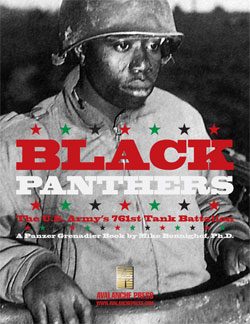 When someone shows you who they are, believe them the first time. When someone shows you who they are, believe them the first time.
- Maya Angelou
The 8th Illinois, the only regiment with a complete slate of African-American officers, mobilized in March 1917 and like the 15th New York spent several months on guard duty before moving to Camp Logan outside Houston in October 1917 – just two months after the 24th Infantry’s firefight with Houston police at the same location.
During the 8th Illinois’ stay at Camp Logan, one soldier was killed by a Houston police officer, and many others sent to the post’s guardhouse for fighting with police and civilians. The city government banned Black soldiers from public transportation, and once again the Army dispatched a Black regiment to France to escape conflict with the white population. The 8th Illinois, re-designated the 370th Infantry Regiment, arrived in France in April 1918; the American Expeditionary Force almost immediately began replacing its Black officers with white men. The 370th Infantry and saw its first action in the Argonne Forest in July as part of the French 59th Infantry Division. The French awarded the Croix de Guerre to 71 “Black Devils” as the French press claimed the Germans called them, while the U.S. Army handed out 21 Distinguished Service Crosses.
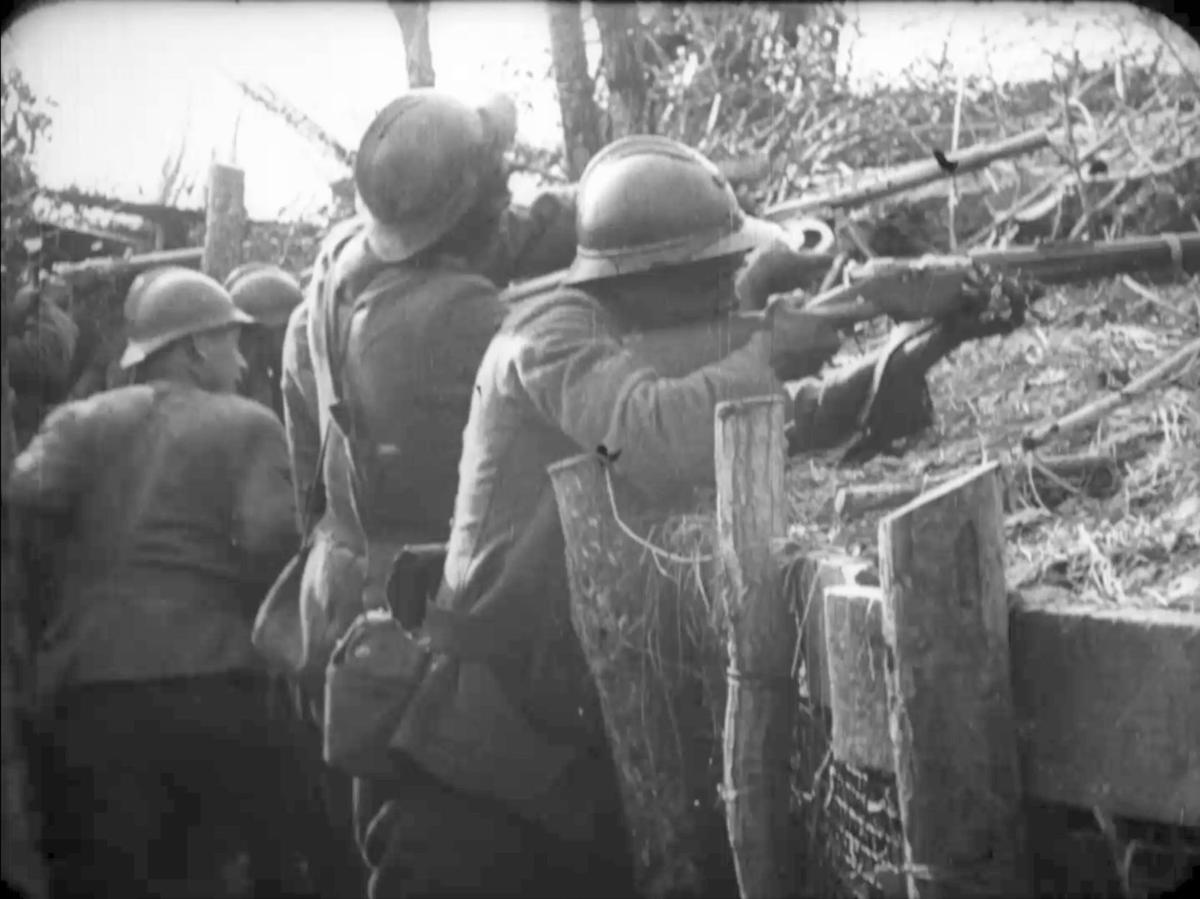
Troops of the 371st Infantry Regiment. Note the French Adrian helmet; the soldier in the foreground has his wine ration attached to the back of his belt.
The composite 372nd Infantry Regiment gathered in January 1918 at Camp Stewart, Virginia and sailed for France in March. The 371st Infantry Regiment formed from draftees from the Deep South with white officers also from Southern states, as they were thought to have a better understanding of Black men than Northern whites who might mistake them for full citizens. The regiment mustered at Camp Jackson, South Carolina in October 1917 (after deferring many draftees’ reporting date to allow participation in the cotton harvest) and went to France in April 1918.
Upon arrival in France the 372nd Infantry received a new commander, Col. Hershel Tupes, who immediately asked that all of the regiment’s African-American officers be replaced. A board of the regiment’s white officers found all but one of their Black colleagues unacceptable. Tupes never claimed that his Black officers were unqualified for the role, but rather held it impossible to ask a white officer to obey the orders of a Black man or socialize with him. The move enraged the Black rank-and-file, and Tupes ordered white officers to wear their sidearms at all times.
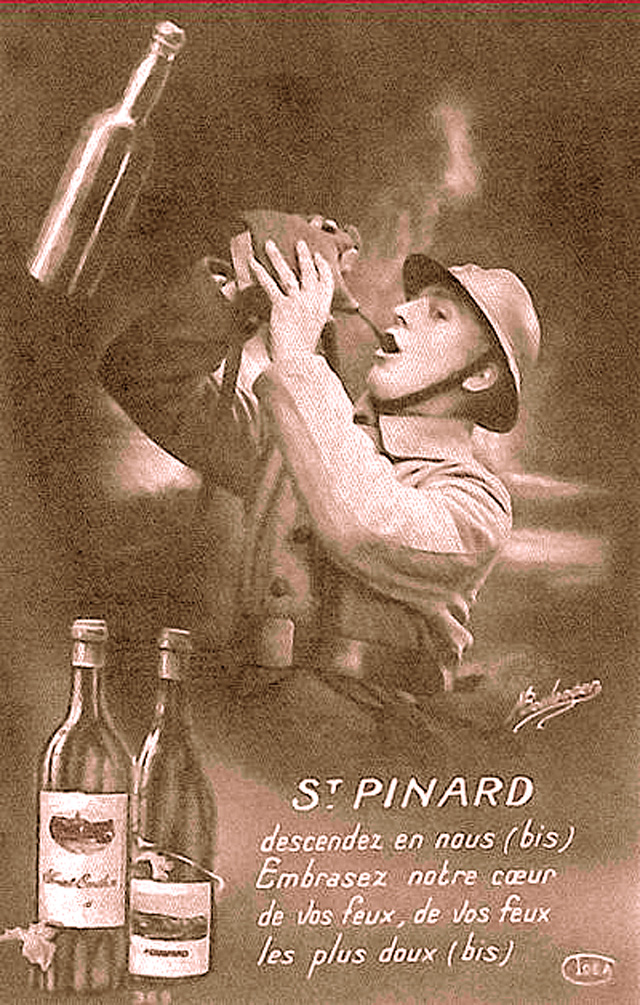 The two regiments were both assigned to the French 157th “Red Hand” Infantry Division, which had been nearly destroyed in the June 1918 Third Battle of the Aisne. It operated for the remainder of the war with two American and one French regiments, though the artillery, engineers and all service elements were French. The French wine ration – Le Pinard, by 1918 set at three-quarters of a liter of truly bad red wine per day - initially troubled American officers, as their soldiers tended to drink it all at once. French officers quickly taught them the poilu practice of nursing the bottle throughout the day (well, maybe not that guy on the right). The lessons took hold, and the 372nd Infantry’s Black soldiers received 52 individual awards of the Croix de Guerre, as did the regiment as a whole. The two regiments were both assigned to the French 157th “Red Hand” Infantry Division, which had been nearly destroyed in the June 1918 Third Battle of the Aisne. It operated for the remainder of the war with two American and one French regiments, though the artillery, engineers and all service elements were French. The French wine ration – Le Pinard, by 1918 set at three-quarters of a liter of truly bad red wine per day - initially troubled American officers, as their soldiers tended to drink it all at once. French officers quickly taught them the poilu practice of nursing the bottle throughout the day (well, maybe not that guy on the right). The lessons took hold, and the 372nd Infantry’s Black soldiers received 52 individual awards of the Croix de Guerre, as did the regiment as a whole.
The 371st Infantry also received the unit award of the Croix de Guerre, and 123 of its soldiers were recognized as individuals. The regiment fought in repeated offensives, taking over 1,600 prisoners and shooting down three German airplanes with rifle fire. One soldier, Cpl. Freddie Stowers, was recommended for the Congressional Medal of Honor; the French division staff forwarded the regiment’s citation to AEF headquarters which promptly “lost” the papers. Stowers was finally recognized for his valor in 1991.
The grandson of a slave, Stowers worked as a farmhand before he was drafted in 1917. As a rifle squad section leader, found himself in command of his platoon when the platoon lieutenant and all senior NCO’s were struck down during an assault on the heavily-defended hill known as Cȏte 188 in September 1918. Stowers crawled forward to assault and destroy a German machine-gun nest, then led his platoon in clearing the German trench with rifles and bayonets. With that position secure, he led them in a charge against the second line of German trenches. Hit multiple times by machine-gun fire, he lay on the ground screaming for his men to keep pressing forward, which they did as he slowly succumbed to blood loss.
The U.S. Army had drafted 83,400 Black men by September 1917, and used half of them to form labor and stevedore regiments, supervised by Black NCO’s drawn from the Buffalo Soldier regiments. Most African-American soldiers served in these units, and in Pioneer Infantry battalions, during the First World War.
The remainder of this first intake would be used to form a Black infantry division, the 92nd, with the best 26,000 men retained for the division and the remainder sent to labor service units. Secretary of War Baker intended for the Colored division to have Black officers fill all of its junior slots, with white men manning the division staff and of course the command positions. The Colored Officers Training Camp opened at Camp Des Moines, Iowa on 17 June 1917 with 1,250 candidates enrolled, most of them graduates of Black colleges and universities like Howard, Morehouse and Hampton. On 15 October 1917 it commissioned 639 officers: 106 captains, 329 first lieutenants and 204 second lieutenants. Initially all were assigned to the 92nd Infantry Division. The division staff took special care to make sure that in no circumstance would a white officer be under the command of a Black officer.
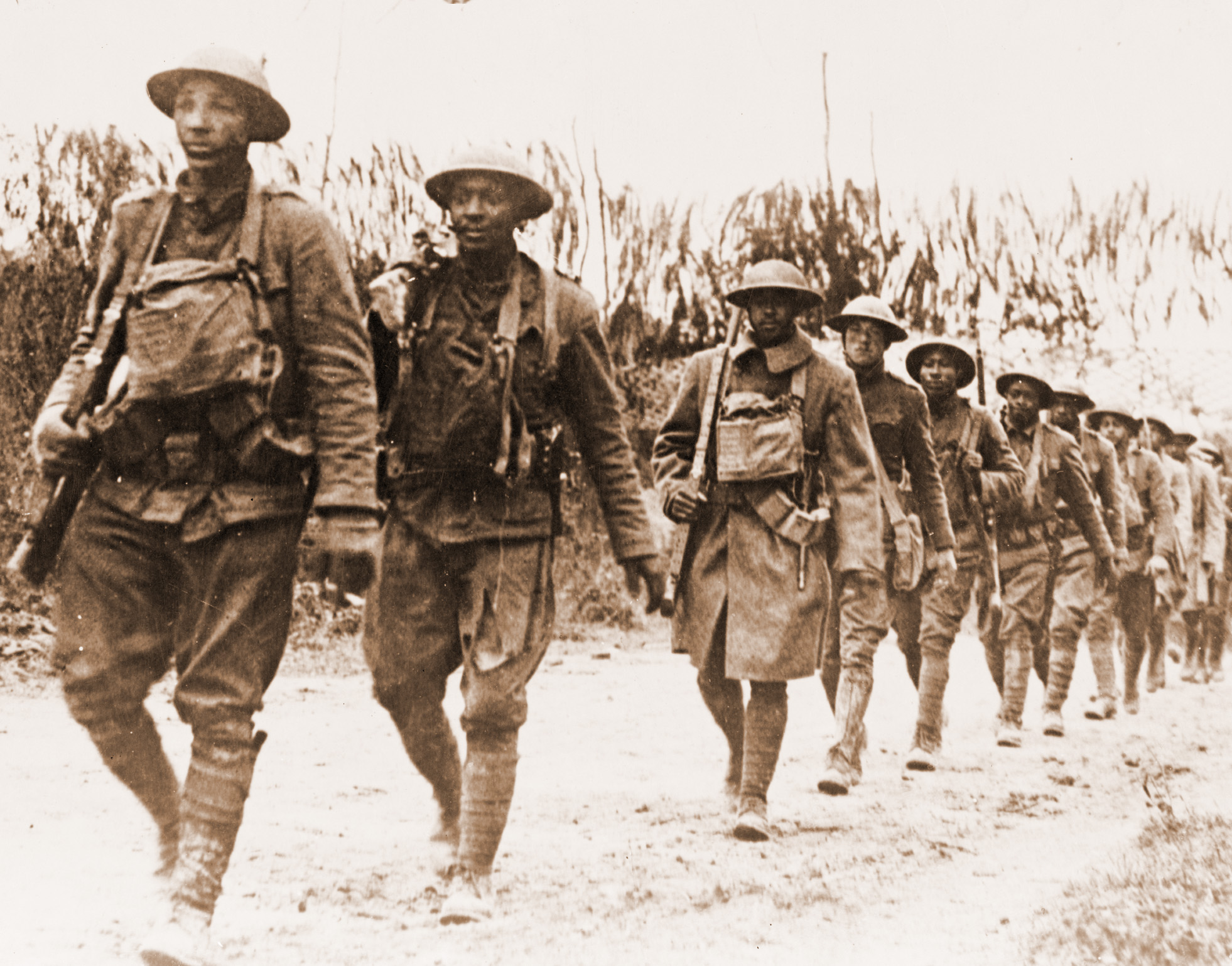
American soldiers of the 92nd Infantry Division near Verdun. 5 November 1918.
Following American practice during World War I, the draftees for each formation came from specific areas. The 365th Infantry Regiment had men from Texas and Oklahoma, the 366th Infantry from Alabama, the 367th Infantry from New York and the 368th Infantry from Tennessee, Pennsylvania and Maryland. The division’s two machine-gun battalions drew their men from South Carolina.
Training, such as it was, took place at scattered locations across the eastern United States, the only division to be organized in such a manner. By the time the division moved to France in June 1918, the artillerymen had yet to meet a cannon, and the machine-gunners had trained with obsolete Gatling guns.
Once in France, the American Expeditionary Force attempted to enforce segregation, with a hysterical emphasis on the danger of Black American soldiers having sex with white French women. The French authorities, both civil and military, usually ignored their demands. Within the division, white officers replaced a number of Black officers. “The division,” division commander Charles Ballou wrote, “is a dumping ground for incompetent white officers.”
The 368th Infantry Regiment entered the front lines on 25 September 1918 in the Argonne, with orders to attack the following morning. The troops went forward without artillery support, as the 92nd’s three artillery regiments had been assigned to provide fire for neighboring divisions. The regiment lasted five days at the front before it disintegrated. Regimental commander Col. Fred Brown claimed that his troops had fled the front without orders, but subsequent investigation found that he had indeed sent runners to order a retreat. Maj. Max Elser, the white commander of the regiment’s 1st Battalion, suffered a breakdown under fire. He was found in a dugout, sobbing that he could not stand the pressure. Elser was relieved and hospitalized for psychoneurosis; five Black officers were sentenced to death for cowardice under fire, but Secretary of War Baker exonerated them and attributed the failure to Brown’s incompetence.
The 92nd Infantry Division shifted to a quiet sector for the remainder of the war, and suffered a total of 1,700 casualties during its front-line service. The brief exposure in the Argonne was enough to earn it, and all African-American troops, a reputation for cowardice and failure.
The four regiments attached to the French Army suffered a combined 584 killed in action and 2,582 wounded, or 32 percent of those committed to combat. None of the losses in either division were replaced; once the Black units shipped out for France, the Army ceased training of Black men other than for labor units. No replacements were available, and the Black regiments steadily shrank as the war ground on.
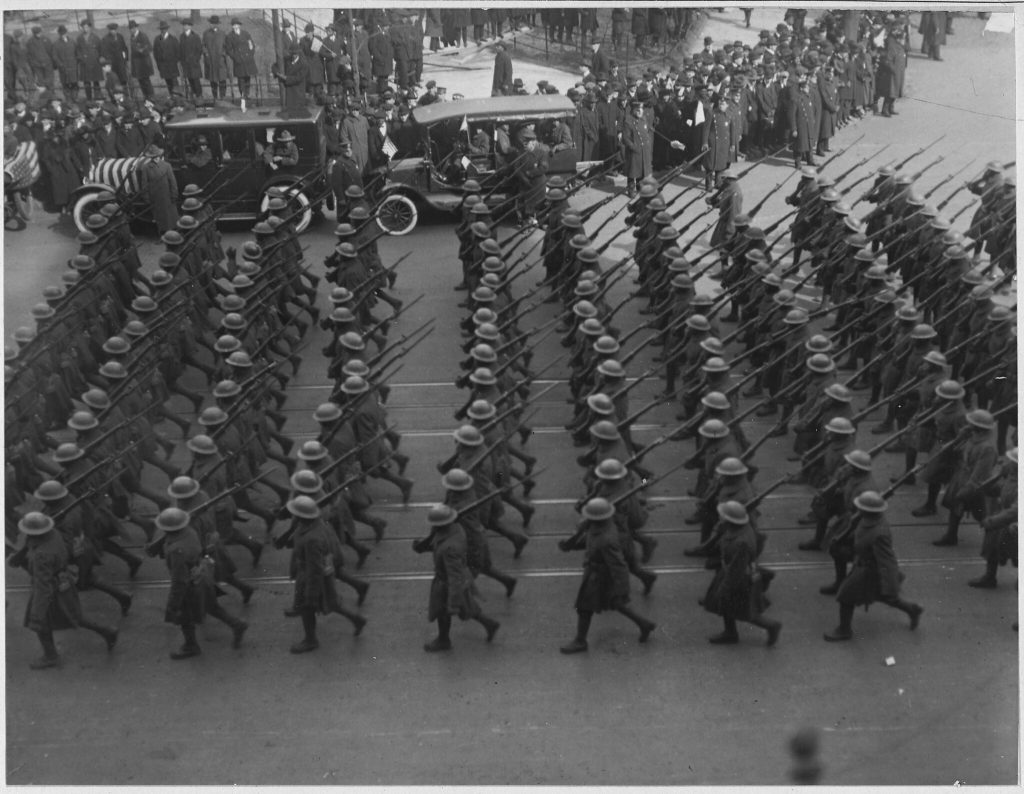
The Harlem Hellfighters come home. 17 February 1919.
Once the fighting ended all eight Black regiments saw occupation duty in Germany, but were sent home quickly lest their men have sex with white women. The Black Pioneer Infantry units remained much longer, tasked with removing minefields and barbed wire and perhaps the most gruesome task of all, collecting and identifying the shattered bodies that covered and underlay the battlefields of the Great War.
The first New York regiment to return home after the Great War, the Harlem Hellfighters received their own parade on 17 February 1919. Nearly one million New Yorkers lined Fifth Avenue as the 3,000 surviving troops, led by their famous band, marched in full American combat gear. New York held another victory parade on 10 September, featuring the 1st Infantry Division. Another parade took place a week later in Washington. The Hellfighters were specifically excluded, and no African American unit took part in either parade. Something had changed during those intervening seven months.
The full series is here:
• Race in America: Founded on Slavery
• Race in America: Civil War
• Race in America: Jim Crow
• Race in America: The Black Doughboys, Part One
• Race in America: The Black Doughboys, Part Two
• Race in America: Red Summer
• Race in America: Tulsa
• Race in America: Klan Scam
• Race in America: Strange Fruit
You can order the Black Panthers Historical Study right here.
That’s both history and scenarios.
Please allow an extra six weeks for delivery.
You can order the Separate, But Heroes book right here.
That’s just the exciting history.
Please allow an extra six weeks for delivery.
Sign up for our newsletter right here. Your info will never be sold or transferred; we'll just use it to update you on new games and new offers.
Mike Bennighof is president of Avalanche Press and holds a doctorate in history from Emory University. A Fulbright Scholar and NASA Journalist in Space finalist, he has published an unknowable number of books, games and articles on historical subjects.
He lives in Birmingham, Alabama with his wife, three children and his dog, Leopold.
Want to keep Daily Content free of third-party ads? You can send us some love (and cash) through this link right here. |
